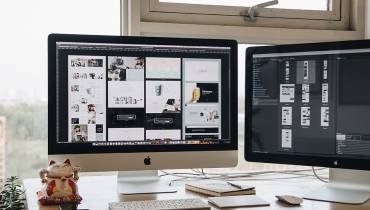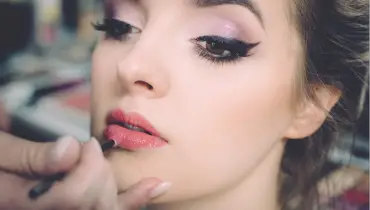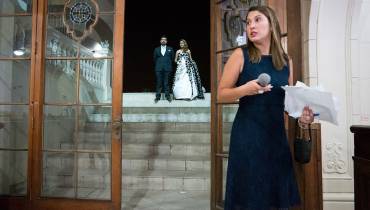How to Create and Use Good Typography for Your Website Designs
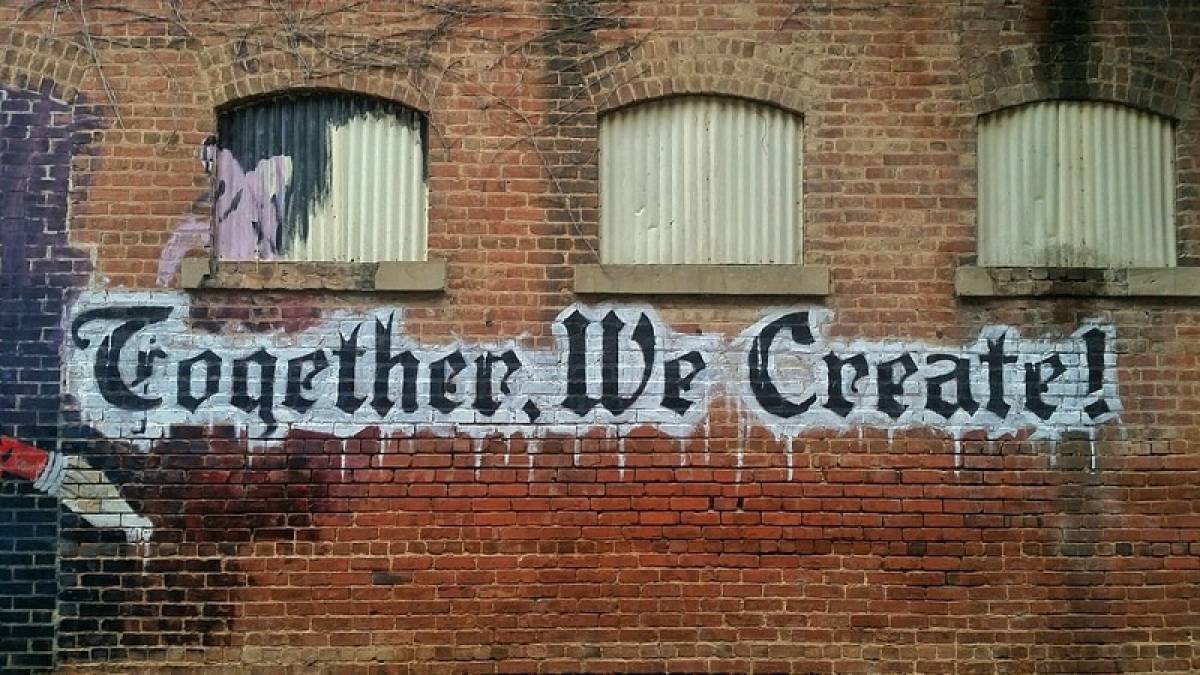
Typography can be described as the art or technique of designing the letters and texts in a page that makes it attractive to the reader (as opposed to, say, designing images, tables, or other visual enhancements). It involves the kind of arrangement of texts and letters that is based on their appearance, structure, and style.
The aim of typography is to make text presentable and appealing so it displays a message in the most appealing way possible. It is mainly concerned with the style and size of typefaces, which include letters, numbers, punctuation marks, and special symbols of the same design.
When a typography is done correctly, it expresses to the reader the right emotions and aptly conveys good vibes that the brand or the content stands for or intends to be known for.
Why Is Good Typography Needed for Web Design?
Web design encompasses many different skills and disciplines in the production and maintenance of websites, including web graphics, webpage layout, interface design, and content authoring.
As you would expect, web design has a huge impact on user experience and the image or perception of your website. And typography has a big impact on how users experience your web designs and their text features, too.
While important, typography is often overlooked when it comes to implementing different web design elements, including the use of fonts, headlines, and texts on the site. And yet it is typography that brings everything together nicely and makes web designs legible and impressive.
Typography is not only a part of web design, but it is also something that makes the web designs whole. It remains as important today in the digital era, as it was in the past.
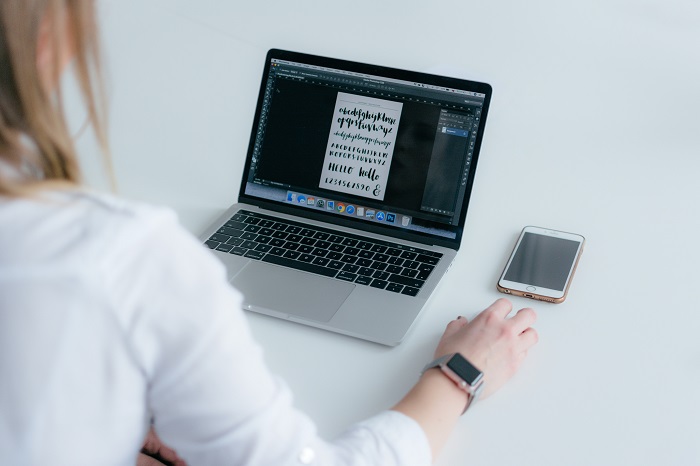
Best Ways to Create Good Typography for Web Design
There are a lot of ways to ensure you create good typography for your web designs. Some of them are mentioned below.
Text:
- When it comes to creating and using typography in your web designs, the text should generally be legible, bold and condensed so that it is representing the brand or the content clearly and powerfully.
- Using a bold text is considered important so that it shows a strong image. There are many bold fonts that do this job wonderfully.
- While it is generally considered good to use bold texts, it is always captivating to use a plain font instead of a complex, fancy one.
Simplicity:
- Simplicity is key and it is what makes the typography in web design successful. A lot of people overdo the designs and the font so that it makes the entire format messy.
- It is also said that when simple fonts are used, it becomes more engaging for the readers than any other type of fancy fonts.
Fonts:
- People are more likely to be attracted to a website that uses simpler as opposed to sophisticated fonts. Use of simple fonts is said to increase website views and its readability, while using fancy fonts tends to reduce the professional-look and structure of a website.
- There are a huge variety of simpler fonts that can suit your website’s needs. For example, using the Avenir font free is one of the examples of using a simpler font. This font is a geometric sans-serif typeface that was invented by Adrian Frutiger in 1987 and released in 1988 by Linotype GmbH. The word ‘avenir’ stands for future in French.
- Also, this font is not purely geometric as it has vertical strokes that are thicker than the horizontals.
- Choosing the right kind of font can also be very helpful to users who view your website on their smart phones, tablets, or laptop, read better.
- Carefully select fonts, so that it matches with the website.
- All the fonts you use should match with each other. Using a simple font with a bold one, or a bold one with the calligraphic one, for example, can make the website look very unprofessional and, honestly, a bit weird as well.
Lengths:
- Often, people add more information than is needed, and they make the lengths of sentences extremely long. This makes paragraphs difficult to read and grasp the message being conveyed with ease. It simply does not provide good readability.
- It is recommended to use shorter sentences so that it is easier to read and grasp the message. Mostly, typography restricts characters in lines/sentences to about 50 to 60.
White space:
- Using a correct degree of white spaces even between the lines of your text increases the readability and attractiveness of the text. Failing to do so can make the entire text cluttered and prone to confuse the reader.
- So, apply an appropriate height between the lines of text to achieve good line height. For most text, the optimal line spacing is between 120% and 150% of the font size.
Color contrast:
- Using a color contrast can be tricky. One should carefully select the color that suits the background and the text without dimming the entire look.
- Be careful of the kind of message that you want to convey through the typography, because often the typography boosts or supports the kind of content that you are presenting to the readers. For example, if you are writing a sad passage and the fonts and contrast that you have used communicates a bright or happy outlook, then the user can get confused with the message.
Caps:
- Avoid using caps lock in your web design if you can, since it gives the illusion as if you're screaming at readers. Caps also tend to be very unpleasant and irritating on the eyes, and they will most probably make readers stop reading before they even start.
- What you need to do is to be sure who your target audience are, and make your website suited to them by using relevant typography in your web design. Take their visual needs and design expectations in considerations when creating your typography.
The Pros of Utilizing Good Typography in Web Design
There are several pros of good typography in web designs. Some of them are mentioned below:
- It helps give an entire structure to your website and makes the content reliable and readable for the visitors.
- It allows you to better express the ideas behind the website through the choice of fonts and styles used in your designs.
- It enhances the ideas behind your content and supports the entire message through its fonts and contrasts.
- It makes it easier for people to read the text and attracts them to the content.
- It can create a whole sophisticated and professional look to your website, and makes your brand appealing in its own simple and unique manner.
- Last but not the least, using the right typography not only makes it easier for people to read the texts and understand it better, but It can even attract more readers by appealing to them with its simple but attractive style.
The Challenges of Utilizing Typography in Web Design
There are some challenges and cons of typography in web design. Some of them are mentioned below:
- It is mostly impossible to predict the precise kind of screen size that users will be using when viewing your website on their mobile devices. So, to accommodate all (or most) of them can be a challenge. Thus, it is mostly difficult to select the most appropriate and right kind of typography that fits the different screen size every gadget user can have.
- Screen resolution or pixels play a bigger part than you may realize in web design typography. Although, new tech solutions are available these days, generally designers should keep in mind that the older that tech is, the more reliable it likely is for the screens.
- Also keep in mind that the fonts designers tend to choose also depend on the brightness of the screen, so make appropriate settings regarding the fonts and their color contrasts.
Conclusion
Ultimately, typography is not only important for increasing your website’s attractiveness, but also increasing its readability. It consists of fonts, color contrasts, styles, sizes, and much more, which are all essential components for great web design and user experience.
Typography plays a big role in many fields, and it's not different in web design. Use it in a considered and calculated manner as it can be the factor that makes or breaks your website.












